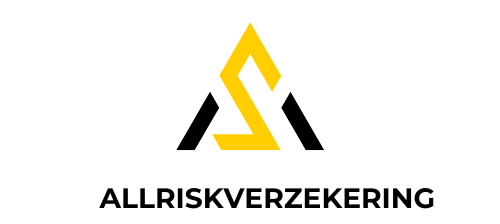As we continue to face the global climate crisis, the need for energy-efficient solutions in every industry becomes increasingly critical. The real estate industry is no exception. Our building designs have to evolve to become more sustainable, and one of the most effective ways to do this is through the use of solar shading techniques.
Solar shading techniques provide control over the natural lighting and thermal comfort of a building, reducing the need for artificial lighting, heating, or cooling. It’s not just about improving the building’s energy efficiency; it’s also about enhancing the comfort and wellbeing of its occupants.
Have you seen this : What Are the Best Practices for Implementing Green Spaces in Urban Real Estate Projects in the UK?
The Concept of Solar Shading
Before delving into the specifics of solar shading techniques, it’s crucial to understand what solar shading is. Solar shading refers to the use of physical structures or systems to control the amount of sunlight that enters a building. It’s a passive design strategy that aims to minimize heat gain from the sun while maximizing natural light.
Deploying smart solar shading techniques can lead to substantial energy savings. When a building has effective shading, it’s less dependent on air conditioning during the hot months, and heating requirements are reduced in the winter because of the passive thermal gain.
This might interest you : What Are the Best Investment Strategies for UK Real Estate During Currency Fluctuations?
Designing with the Sun in Mind
A successful solar shading strategy begins with an intelligent building design that takes into account the path of the sun. This approach is often referred to as passive solar design. It’s about positioning and orientating the building in a way that optimizes the use of the sun’s energy.
Passive solar design considers multiple factors like the site’s climate, the building’s orientation, the placement and type of windows, and the use of shading devices. The goal is to create a balance between solar gain and solar protection. Too much sun can lead to overheating, while too little can result in a dark, chilly space.
Using passive solar design, a building can gain heat from the sun during the cooler months and deflect it during the hotter ones. This strategy reduces the need for supplemental heating or cooling systems, therefore saving energy and reducing greenhouse gas emissions.
Solar Shading Devices: From Windows to Shading Systems
Windows play a significant role in a building’s solar gain, and the choice of window can greatly impact a building’s energy efficiency. Low-emissivity (Low-E) glass windows are an excellent choice for solar control. They have a special coating that reflects infrared light, keeping heat inside the building in the winter and outside in the summer.
In addition to choosing the right windows, the use of external shading devices like awnings, louvers, blinds, and overhangs can further improve a building’s solar control. These devices can be adjusted to block the high summer sun and let in the low winter sun.
However, for an optimal balance between daylighting and solar heat gain, dynamic shading systems are recommended. These systems automatically adjust their position in response to changes in the sun’s position and intensity, ensuring the best possible light and thermal comfort levels.
Incorporating Natural Ventilation for Improved Air Comfort
Solar shading isn’t just about controlling the heat and light from the sun; it also encompasses strategies for natural ventilation. Natural ventilation uses outdoor air to cool down and ventilate a building, reducing the need for mechanical cooling systems.
Design elements like operable windows, vents, and skylights can allow for the flow of air through the building. The placement of these elements can create a path for air to move in a specific direction, contributing to the cooling of the space. In combination with solar shading techniques, natural ventilation can significantly enhance a building’s thermal comfort and energy efficiency.
The Future of Solar Shading: Smart Buildings and Beyond
As technology evolves, solar shading techniques are becoming more advanced and integrated into the building’s overall design. The future of solar shading lies in smart buildings that use automated systems to adjust shading devices based on real-time weather data and occupant comfort.
These buildings do not only respond to the sun’s position but also anticipate changes in the weather and adapt accordingly. They use sensors and control systems to automatically adjust blinds, awnings, and windows, ensuring optimal light and thermal comfort at all times. This level of control maximizes energy efficiency and provides a better environment for occupants.
As we look to the future, it’s clear that solar shading will continue to play a critical role in building design and energy efficiency. By harnessing the power of the sun, we can reduce our reliance on fossil fuels, decrease our carbon footprint, and create more sustainable buildings and cities.
Passive Solar Design: A Deeper Look into Energy Efficiency
To fully comprehend the power of solar design, it’s necessary to delve deeper into the concept of passive solar design. This strategy incorporates specific elements in the building to capture, store, and distribute solar energy. The layout and materials of the building play a vital role in this approach, utilizing the energy from the sun to provide heating, cooling, and natural light.
The key components in passive solar design include south facing windows, which allow optimal sunlight entry, and thermal mass materials that store and gradually release heat. Other elements like shading devices and insulation also contribute to reducing energy consumption and maximizing comfort.
A building with a high thermal mass can absorb heat during the day and release it at night, maintaining a steady temperature. Materials like brick, stone, and concrete have good thermal mass properties and are often used in passive solar design. They can significantly reduce the need for artificial heating and cooling, leading to considerable energy savings.
Orientation is another critical aspect of passive solar design. For optimal solar gain, the building should have its main facade facing south in the Northern Hemisphere, or north in the Southern Hemisphere. This orientation allows the building to gain maximum sunlight during the winter and be shaded in the summer, reducing heat gain and loss.
Proper insulation is also vital to prevent heat loss in the colder months and keep the interior cool in the summer. Combined with solar shading devices, these elements create a comfortable indoor climate while cutting down on energy consumption.
Solar Shading and Renewable Energy: A Conclusion
Implementing solar shading techniques in building design has extensive benefits beyond energy efficiency. By reducing dependence on artificial lighting, heating, and cooling systems, solar shading can significantly decrease energy consumption, contributing to the global shift towards renewable energy.
Solar shading is not just a concept; it’s a proven method for conserving energy. A study from Google Scholar Crossref reveals that buildings utilizing solar shading techniques can reduce cooling energy consumption by up to 50%. This underscores the potential of solar design in tackling the urgent issue of climate change.
Moreover, solar shading enhances thermal comfort, a crucial aspect of occupant wellbeing. By regulating solar heat gain, shading devices create a more comfortable environment, leading to increased productivity and satisfaction among occupants.
As architects and designers continue to explore solar shading techniques, we can expect a greater focus on integrating these strategies into our built environment. From residential homes to commercial buildings, solar shading has the potential to transform our living and working spaces into more sustainable, energy-efficient structures.
As we look towards a sustainable future, it’s clear that solar shading and energy-efficient building design will play a pivotal role. Harnessing solar energy not only reduces our reliance on fossil fuels but also sets us on the path towards a more sustainable and energy-efficient future. By tapping into the power of the sun, we can make a significant impact on our energy consumption, carbon footprint, and contribution to the global climate solution.
















